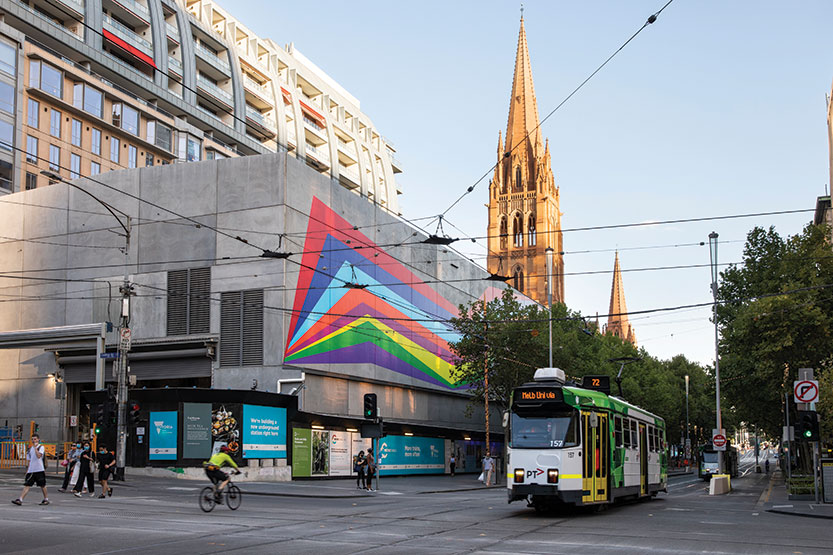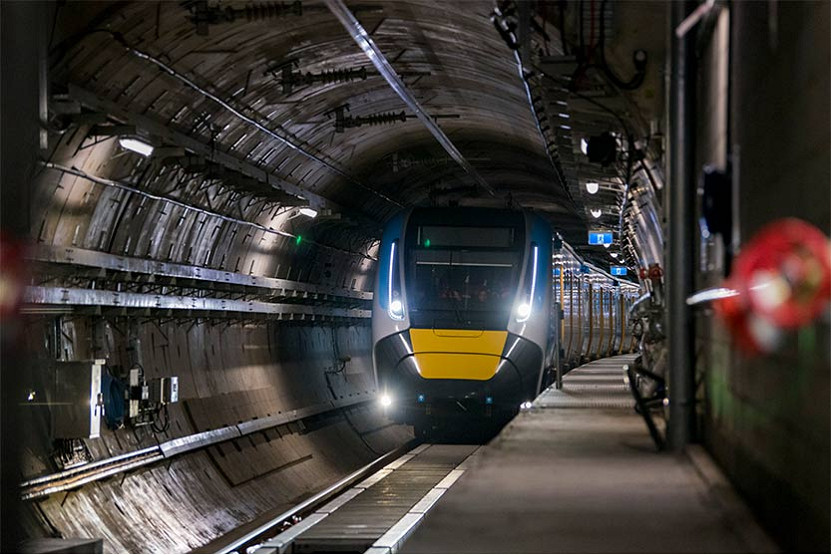It may sound like a far cry to suggest that a new train tunnel will provide the answer to Melbourne’s post-COVID identity crisis, particularly among many of its office workers who have made working from home a permanent part of their lives.
As Lord Mayor Sally Capp has regularly put it, “the rhythm of the city has changed”, and while the weekend and night-time economies are humming again off the back of a packed events calendar, the Monday to Friday story is more complicated.
In recent years, Melbourne has suffered what some analysts have branded as a problem with “TWaTs” – those who preference bookending their weeks by working from home on Mondays and Fridays, while only commuting to the office on Tuesdays, Wednesdays, and Thursdays.
Whatever the work pattern, Melbourne still tracks well behind other major Australian cities for office occupancy. According to JLL Research, CBD office vacancy rates measured at a record 18.2 per cent at the end of 2023 – 3.7 percentage points above the national average of 14.5 per cent.
But while office vacancy trends in the wrong direction, there are some exciting green shoots in the city’s economy that might suggest this trajectory could soon start turning around fast.
The latest Walk the CBD report released by Fitzroys on April 17 proclaimed that Melbourne was undergoing a “post-pandemic transformation”, with retail vacancies continuing to trend down largely because of a resurgence in international students.
The market report showed that CBD retail vacancies have come down from 15.5 per cent to 8.7 per cent during the past year across its key retail precincts, driven by a take-up of space by hospitality, food and beverage and entertainment operators.
Within these sectors, Fitzroys reported that CBD tenancies had jumped from 34.1 per cent to 40.9 per cent of all surveyed spaces. While speciality operators receded slightly, service retail also lifted modestly.
These numbers are supported by the City of Melbourne’s own latest data, which has shown the first few months of 2024 recorded the highest CBD foot traffic levels since 2015, with average weekday activity measuring the highest it’s been since February 2020.
Council data also shows that more than half of spending by domestic visitors, workers and residents in February ($472 million) occurred during work hours (8am to 6pm), which is six per cent higher than in February 2023.
But perhaps one of the most telling trends in the Fitzroys real estate report was Swanston St being the “biggest improver” in terms of retail vacancies, as tenants take up space “around the future Metro Tunnel station entrances”.
With international students having “changed the face of Melbourne CBD retail in the city’s post-pandemic recovery”, the report suggested that the spike in retail on Swanston St was the result of an anticipation of “key pockets of the city reawakening in 2025 on completion of the long-term [Metro Tunnel] construction efforts”.
Fitzroys division director – agency James Lockwood pointed out that the Metro Tunnel station works along Swanston St had taken chunks out from Federation Square up to Collins St, and further north around the State Library, for several years now.
“There’s been a lot of scaffolding and a lot of construction going on,” Mr Lockwood said.
“The city’s really looking forward to the Metro Tunnel works being completed. That’s taken some key pockets of the city out of action for a long time, but these major construction sites are set to become hives of activity nearly overnight [in ways] that retailers and hospitality operators will really be able to thrive off.”

During Melbourne’s post-COVID era conversations around the future of the CBD, the fact that a new multi-billion-dollar train tunnel is being built beneath it has often been overlooked.
This is perhaps, in part, because many Melburnians still don’t fully understand or appreciate the significance of how the major project stands to benefit our transport network, and ultimately our CBD.
At a Residents 3000 forum with members of the Metro Tunnel’s project team in February, one local resident raised a question that has become a consistent theme since the project was first announced. And, that is, why the new CBD stations were being built so close to existing ones, suggesting that this seemed illogical.
Melbourne’s entire train network has been based around the City Loop since its opening in 1981. By providing a line that dissects the CBD, the Metro Tunnel will help to unclog the City Loop by taking congestion away from some of the network’s busiest lines.
Underground pedestrian connections will be made available between Flinders Street and Town Hall Stations, as well as Melbourne Central and State Library Stations, allowing for easy connections between services.
But the biggest change that unclogging the network will bring is something Melburnians often complain about – more frequent train services. And this in itself, could be the catalyst for helping stem the negative trend in office vacancy rates. Here’s why …
Department of Transport data shows that while public transport patronage across Melbourne is slowly increasing since the end of the pandemic, numbers are still well down from pre-COVID levels as more workers preference their cars.
The Public Transport Users’ Association says that the main barrier to more people catching public transport is “the service quality, not the fares”, and so, many are opting to work from home due to convenience.
“PT needs to be affordable, but it also has to be more convenient: frequent, reliable, fast, and well-connected,” it said.
By easing capacity across the rest of the network, the Metro Tunnel is expected to be running more reliable services every three minutes on new modern trains, with testing of its “turn-up-and-go services” already taking place since March.
This spells good news for the CBD, which could see more workers choose to head into the office more regularly. And, like with anything new, the novelty of trialling the tunnel for the first time could very well lead to more workers changing their behaviour and throwing an extra office day or two into their mix.
If the increase in retail activity is any indicator, Mr Lockwood said operators were witnessing the shift in balance of the CBD towards a lifestyle playground and were confident in its viability.
“These [investments] are great votes of confidence in the CBD from quality operators who have witnessed first-hand the city’s post-pandemic recovery and want to be a part of it going forward,” he said.
Together with the huge numbers of students and visitors we’re now seeing in the CBD, it could only be a matter of time before workers, as well as new residents, add to what the outgoing Lord Mayor described last month as an undeniable “upward trajectory”.
“The Metro Tunnel’s opening is a game-changer for the city – and we expect it will encourage many more Melburnians to use public transport,” Cr Capp said.
“Pedestrian and commuter activity in the city continues to grow each year, which will rise further with greater train capacity.”
“The addition of five new stations will cater for the increase of jobs in the city – attracting more customers for our businesses and entertainment precincts.”
On March 19, councillors also endorsed 11 recommendations from the City Economy Summit held in November and December 2023 to “support businesses and entice more workers to the city”. These included advocating to the state government for variable public transport pricing, with an emphasis on city workers; sharing regular data to help traders plan; more daytime events; and making it easier to grant permits for busking, outdoor dining and street trading.
Source: CBD News


